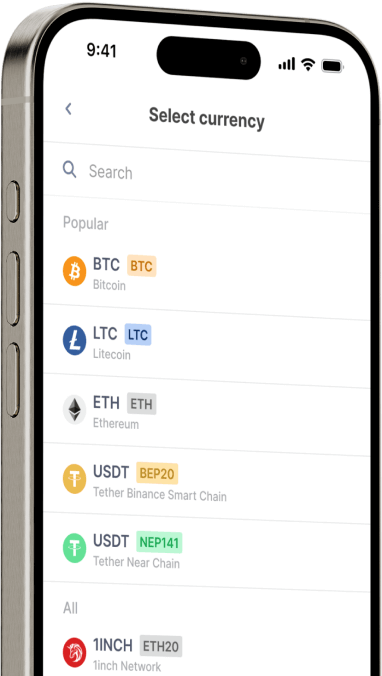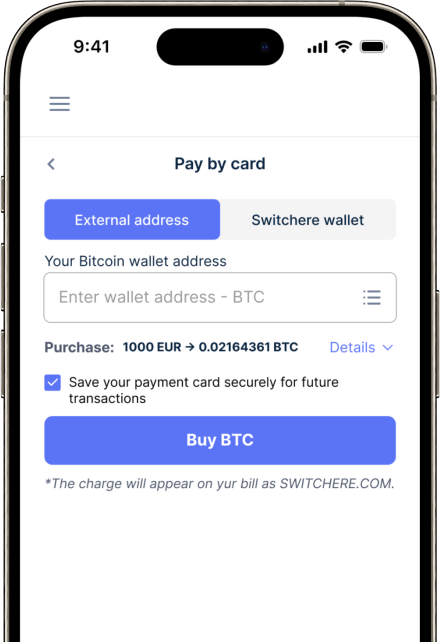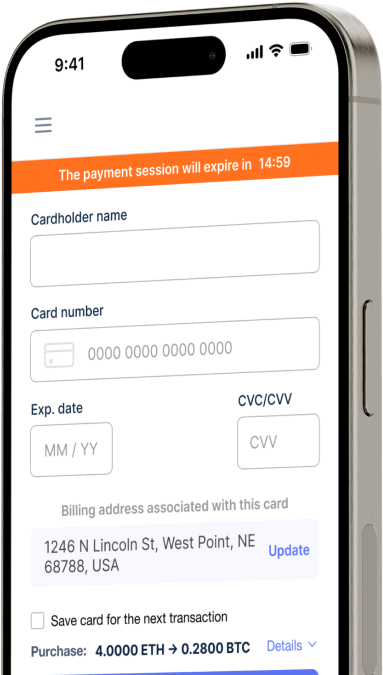Convertissez
South African Rand (ZAR) en Celsius (CEL) instantanément
Achetez Celsius (CEL) avec South African Rand (ZAR) facilement sur Switchere et bénéficiez de transactions rapides et sécurisées.
A propos de
Celsius (CEL)
Celsius Network, avec son jeton natif CEL, s'est imposé comme une plateforme majeure de finance centralisée (CeFi) conçue pour combler le fossé entre la banque traditionnelle et le monde des actifs numériques. Sa fonction principale était d'offrir aux utilisateurs la possibilité de générer des rendements sur leurs avoirs en cryptomonnaies et de contracter des prêts garantis par des cryptos. La plateforme fonctionnait sur une base de garde, gérant les fonds des utilisateurs pour générer des revenus d'intérêts grâce à des activités de prêt à des emprunteurs institutionnels. Ce modèle l'a positionnée comme une alternative conviviale pour les détenteurs de crypto cherchant à faire travailler leurs actifs sans avoir à naviguer dans des protocoles DeFi complexes.
Le jeton CEL était au cœur de son système de fidélité et de récompenses. En tant que jeton utilitaire, détenir et utiliser le CEL offrait des avantages tangibles au sein de l'écosystème Celsius, tels que des taux d'intérêt préférentiels pour les gains et les emprunts. Les utilisateurs pouvaient recevoir des rendements plus élevés sur leurs actifs déposés et des taux plus bas sur les prêts, les récompenses étant souvent distribuées chaque semaine sous forme de CEL. Cette structure de tokenomics était conçue pour encourager la fidélité des utilisateurs et stimuler la demande pour l'actif natif. Cependant, la plateforme a été confrontée à d'importants défis opérationnels et à des pressions du marché, ce qui a finalement conduit à un dépôt de bilan sous le Chapitre 11, impactant profondément ses utilisateurs et remodelant le discours sur le risque dans le secteur des prêts CeFi.
Acheter d'autres 150+ crypto-monnaies pour South African Rand (ZAR)
Autres pièces pour South African Rand (ZAR)
-
ZAR pour ZRX
-
ZAR pour 1INCH
-
ZAR pour AAVE
-
ZAR pour ACH
-
ZAR pour ALGO
-
ZAR pour TLM
-
ZAR pour ANKR
-
ZAR pour APE
-
ZAR pour NFT
-
ZAR pour API3
-
ZAR pour APT
-
ZAR pour ARPA
-
ZAR pour AUDIO
-
ZAR pour AVAX
-
ZAR pour AVAX
-
ZAR pour AXS
-
ZAR pour BADGER
-
ZAR pour BAL
-
ZAR pour BNT
-
ZAR pour BAT
-
ZAR pour BNB
-
ZAR pour BSW
-
ZAR pour BSV
-
ZAR pour BLUR
-
ZAR pour BONE
-
ZAR pour CTSI
-
ZAR pour CELR
-
ZAR pour CELO
-
ZAR pour CEL
-
ZAR pour LINK
-
ZAR pour CHZ
-
ZAR pour CHR
-
ZAR pour C98
-
ZAR pour COMP
-
ZAR pour CFX
-
ZAR pour PEOPLE
-
ZAR pour CVX
-
ZAR pour ATOM
-
ZAR pour CTC
-
ZAR pour CRV
-
ZAR pour DAI
-
ZAR pour DASH
-
ZAR pour MANA
-
ZAR pour DENT
-
ZAR pour DGB
-
ZAR pour DYDX
-
ZAR pour XEC
-
ZAR pour EOS
-
ZAR pour ETC
-
ZAR pour ENS
-
ZAR pour ETHW
-
ZAR pour FET
-
ZAR pour FIL
-
ZAR pour FLOKI
-
ZAR pour GALA
-
ZAR pour GNO
-
ZAR pour ONE
-
ZAR pour HBAR
-
ZAR pour HOT
-
ZAR pour HOOK
-
ZAR pour ICX
-
ZAR pour ILV
-
ZAR pour IMX
-
ZAR pour INJ
-
ZAR pour ICP
-
ZAR pour IOST
-
ZAR pour IOTX
-
ZAR pour JASMY
-
ZAR pour JST
-
ZAR pour KAVA
-
ZAR pour KCS
-
ZAR pour KSM
-
ZAR pour KNC
-
ZAR pour LDO
-
ZAR pour LQTY
-
ZAR pour LPT
-
ZAR pour LOOKS
-
ZAR pour LRC
-
ZAR pour LUNA
-
ZAR pour MKR
-
ZAR pour MASK
-
ZAR pour EGLD
-
ZAR pour ALICE
-
ZAR pour NEAR
-
ZAR pour XEM
-
ZAR pour NEXO
-
ZAR pour NOT
-
ZAR pour NMR
-
ZAR pour OKB
-
ZAR pour OMG
-
ZAR pour ONT
-
ZAR pour EDU
-
ZAR pour OP
-
ZAR pour OGN
-
ZAR pour CAKE
-
ZAR pour PAXG
-
ZAR pour PENDLE
-
ZAR pour DOT
-
ZAR pour POL
-
ZAR pour QTUM
-
ZAR pour QNT
-
ZAR pour RDNT
-
ZAR pour XRD
-
ZAR pour RVN
-
ZAR pour REN
-
ZAR pour RSR
-
ZAR pour RLC
-
ZAR pour RPL
-
ZAR pour SFP
-
ZAR pour SHIB
-
ZAR pour SKL
-
ZAR pour SXP
-
ZAR pour STND
-
ZAR pour STG
-
ZAR pour XLM
-
ZAR pour GMT
-
ZAR pour STORJ
-
ZAR pour STMX
-
ZAR pour SUSHI
-
ZAR pour SNX
-
ZAR pour USDT (Polygon)
-
ZAR pour USDT (AVAC)
-
ZAR pour USDT (BEP20)
-
ZAR pour USDT (ERC20)
-
ZAR pour USDT (SPL)
-
ZAR pour USDT (NEP141)
-
ZAR pour USDT (FA2)
-
ZAR pour USDT (TRC20)
-
ZAR pour USDT (JETTON)
-
ZAR pour XTZ
-
ZAR pour GRT
-
ZAR pour SAND
-
ZAR pour TFUEL
-
ZAR pour THETA
-
ZAR pour RUNE
-
ZAR pour TON
-
ZAR pour TUSD (BEP20)
-
ZAR pour TUSD (TRC20)
-
ZAR pour TWT
-
ZAR pour UOS
-
ZAR pour UMA
-
ZAR pour UNI
-
ZAR pour USDC (Polygon)
-
ZAR pour USDC (SPL)
-
ZAR pour USDC (OP)
-
ZAR pour USDC (BEP20)
-
ZAR pour USDC (AVAC)
-
ZAR pour USDC (ARB)
-
ZAR pour USDC (ERC20)
-
ZAR pour VET
-
ZAR pour VRA
-
ZAR pour WAXP
-
ZAR pour WOO
-
ZAR pour WLD
-
ZAR pour WBTC
-
ZAR pour WMINIMA
-
ZAR pour XDC
-
ZAR pour YFI
-
ZAR pour YGG
-
ZAR pour ZIL
Comment acheter des Celsius (CEL)
Questions fréquemment posées
-
Quelle était la fonction principale de la paire de trading ZAR vers CEL ?
La paire ZAR vers CEL était une rampe d'accès fiat pour les utilisateurs sud-africains afin d'acquérir des jetons Celsius (CEL). L'utilité principale du jeton CEL se trouvait au sein du réseau Celsius, une plateforme de finance centralisée (CeFi). Détenir des CEL offrait aux utilisateurs des avantages tels que des revenus d'intérêts accrus sur les dépôts, des taux d'intérêt plus bas sur les prêts adossés à des cryptos et des récompenses hebdomadaires payées 'en nature' ou en jetons CEL.
-
Quels sont les risques importants liés à l'échange de ZAR contre des CEL après la faillite de Celsius Network ?
Le risque principal est que l'utilité originale du jeton CEL a disparu. Le trading est maintenant purement spéculatif, motivé par les nouvelles concernant la procédure de faillite du Chapitre 11 et le plan de restructuration des créanciers. Il existe un risque de contrepartie extrême, une très faible liquidité sur les plateformes restantes et une forte probabilité que l'actif numérique devienne sans valeur. De nombreuses plateformes ont délisté la paire, ce qui rend difficile la recherche d'un lieu de trading sécurisé.
-
Qu'est-ce qui détermine le prix actuel en ZAR du CEL sur les plateformes d'échange ?
Le prix en ZAR du CEL est déterminé par la dynamique spéculative de l'offre et de la demande sur les quelques carnets d'ordres restants où il est échangé. Il n'est plus basé sur l'utilité du jeton au sein d'un écosystème fonctionnel. Les mouvements de prix sont très volatils et principalement influencés par les nouvelles liées à la résolution de la faillite, les distributions potentielles aux créanciers et le sentiment général du marché à l'égard des actifs numériques en difficulté.
-
Comment pouvait-on généralement acheter des CEL avec des rands sud-africains (ZAR) avant les problèmes de la plateforme ?
Auparavant, l'achat de CEL avec des ZAR impliquait l'utilisation d'une plateforme d'échange de cryptomonnaies qui listait la paire ou offrait une méthode de dépôt en ZAR. Les utilisateurs sud-africains devaient se conformer à la FICA (KYC/AML), déposer des ZAR par virement électronique (EFT) ou virement bancaire, puis soit échanger directement des ZAR contre des CEL sur le carnet d'ordres, soit acheter une cryptomonnaie de base comme le BTC ou l'ETH pour l'échanger contre des CEL.
-
Est-il encore possible de transférer des jetons CEL vers un portefeuille numérique sécurisé ?
Oui, si vous détenez des jetons CEL sur une plateforme d'échange de cryptomonnaies ou dans un portefeuille non dépositaire, vous pouvez toujours effectuer des transactions sur la blockchain. CEL est un jeton ERC-20 sur la blockchain Ethereum. Vous pouvez le transférer vers n'importe quel portefeuille numérique compatible avec Ethereum où vous contrôlez les clés privées (auto-garde). Il est fortement recommandé de le faire plutôt que de laisser un actif en difficulté sur une plateforme d'échange afin de réduire le risque de contrepartie.
-
Existe-t-il des alternatives au CEL pour générer des rendements sur les actifs cryptographiques pour les investisseurs en ZAR ?
Oui, les investisseurs peuvent explorer les protocoles de finance décentralisée (DeFi) pour générer des rendements. Cela implique l'utilisation de plateformes basées sur des contrats intelligents pour le prêt, la fourniture de liquidités ou le jalonnement d'actifs numériques. Contrairement aux plateformes CeFi comme Celsius, les protocoles DeFi ne sont pas dépositaires, mais ils comportent leurs propres risques, tels que les vulnérabilités des contrats intelligents et la perte impermanente. Une diligence raisonnable approfondie sur toute plateforme est cruciale avant d'engager des fonds.




